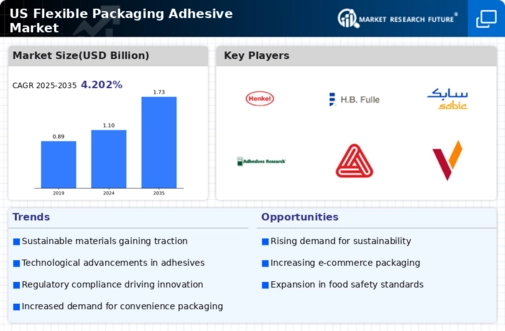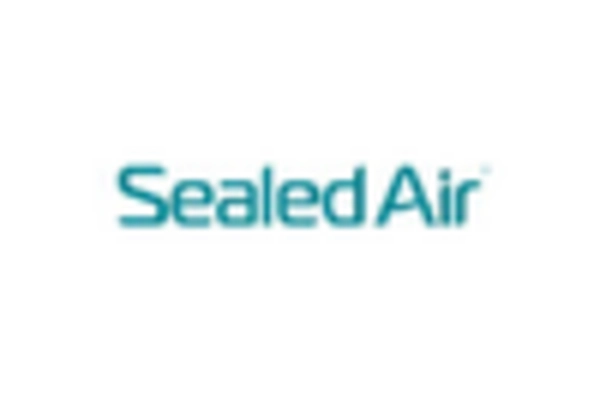Growth in E-Commerce and Online Retail
The flexible packaging-adhesive market is significantly influenced by the rapid growth of e-commerce and online retail. As more businesses transition to online platforms, the need for efficient and durable packaging solutions has surged. In 2025, the e-commerce sector is projected to reach $1 trillion in sales in the US, which in turn is expected to drive the demand for flexible packaging-adhesive solutions that ensure product safety during transit. This growth presents opportunities for adhesive manufacturers to cater to the specific needs of e-commerce businesses, enhancing packaging performance and consumer satisfaction.
Rising Demand for Eco-Friendly Solutions
The flexible packaging-adhesive market is experiencing a notable shift towards eco-friendly solutions, driven by increasing consumer awareness regarding environmental sustainability. As more companies adopt sustainable practices, the demand for adhesives that are biodegradable or made from renewable resources is on the rise. In 2025, it is estimated that the market for sustainable adhesives could account for approximately 30% of the total flexible packaging-adhesive market. This trend is further supported by regulatory pressures and consumer preferences for products that minimize environmental impact, thereby influencing manufacturers to innovate and develop greener adhesive options.
Increased Focus on Food Safety and Shelf Life
The flexible packaging-adhesive market is witnessing a heightened emphasis on food safety and extending shelf life. As consumers become more health-conscious, the demand for packaging solutions that preserve food quality and safety is rising. In 2025, it is estimated that the market for food-safe adhesives will represent around 25% of the overall flexible packaging-adhesive market. This trend is prompting manufacturers to develop adhesives that comply with stringent food safety regulations, ensuring that products remain uncontaminated and fresh for longer periods, thus enhancing consumer trust and satisfaction.
Technological Innovations in Adhesive Formulations
Technological advancements in adhesive formulations are playing a crucial role in shaping the flexible packaging-adhesive market. Innovations such as the development of high-performance adhesives that offer superior bonding strength and faster curing times are becoming increasingly prevalent. In 2025, it is anticipated that the market for advanced adhesive technologies will grow by approximately 15%, as manufacturers seek to improve production efficiency and product quality. These innovations not only enhance the performance of flexible packaging but also contribute to cost savings for producers, thereby driving market growth.
Expansion of the Pharmaceutical and Healthcare Sector
this market is benefiting from the expansion of the pharmaceutical and healthcare sector. With an increasing focus on patient safety and product integrity, the demand for reliable packaging solutions is growing. In 2025, the pharmaceutical packaging segment is projected to account for approximately 20% of the flexible packaging-adhesive market. This growth is driven by the need for packaging that ensures the efficacy of medications and medical devices, leading to innovations in adhesive technologies that meet the specific requirements of the healthcare industry.

















Leave a Comment